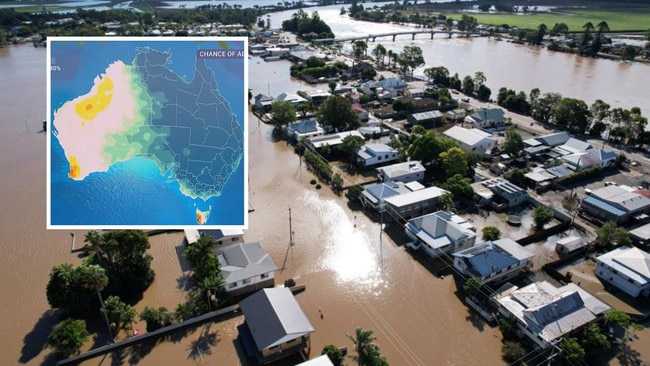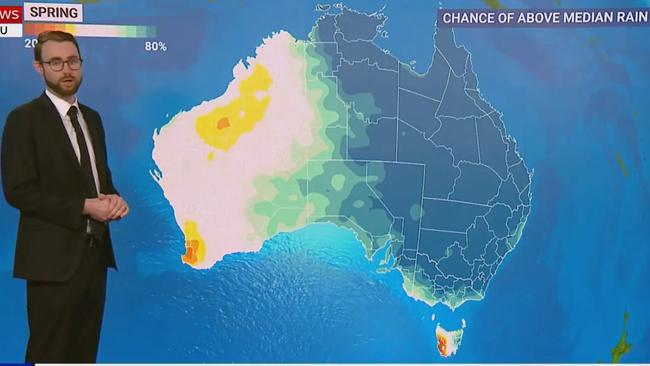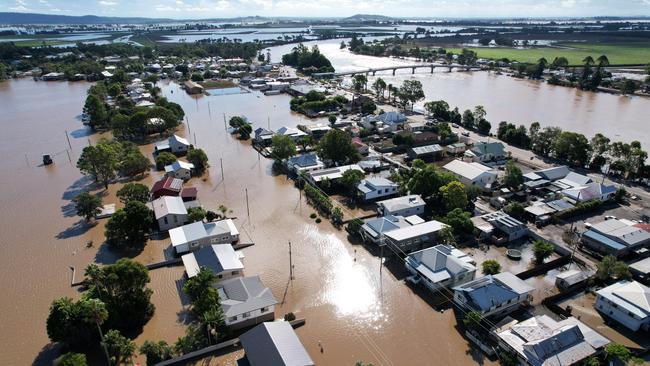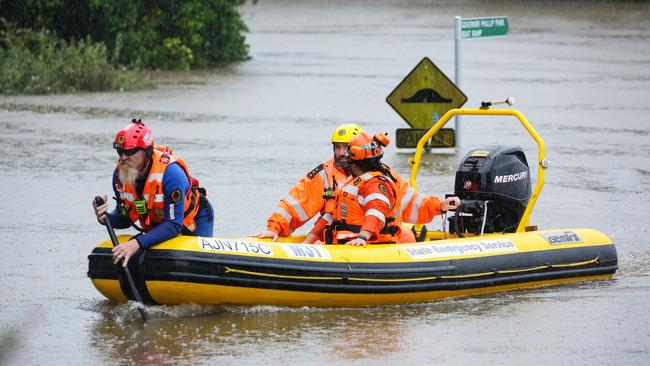Horror impact third La Nina event could have on thousands of Aussies
Aussies have been warned they will need to make serious preparations if La Nina returns – as experts are predicting – for the third time in a row.

Environment
Don't miss out on the headlines from Environment. Followed categories will be added to My News.
Aussies have been issued a stark warning in the wake of the revelation that La Nina is likely to return for the third time in a row this spring.
Meteorologists have said the likelihood of a La Nina weather event returning is three times the normal risk, meaning much of eastern Australia is in for a wet spring, with the dreary conditions possibly continuing into summer.
“The Bureau is advising of very high chances of wet conditions over eastern Australia for the next three months,” the Bureau of Meteorology (BOM) said earlier this week.
“Should a La Niña event be established in the Pacific Ocean, the wet conditions will persist into summer.”
Many Aussies will no doubt be disappointed at the news of more wet weather just as temperatures begin to rise, however, experts have warned there is more to worry about than just the rain ruining your spring and summer plans.

Risk perception expert and Macquarie University Associate Professor, Mel Taylor, and Honorary Senior Research Fellow at the UOW Centre for Environmental Risk Management of Bushfires, Katherine Haynes have said Australians need to prepare if they are going to ride out the next few months safely.
In an article for The Conversation, the pair noted the prospect of a third La Nina event will be “extremely concerning” for the many communities that have been impacted by floods over the last 18 months.
“The last two La Niñas mean our catchments are already full. Dams are at capacity, soils are saturated and rivers are high. In some cases, there’s nowhere for the rains to go except over land,” Associate Professor Taylor and Dr Haynes said.
This means people who were untouched by the recent floods may now be at risk.
An independent inquiry commissioned by the NSW government into this year’s floods found nine people tragically lost their lives and 5300 homes were left uninhabitable.
The report also found 14,600 homes were damaged in the floods and 7700 people sought emergency accommodation.
“The inquiry revealed a central theme: the need for a renewed and stronger emphasis on sustained disaster preparedness,” Associate Professor Taylor and Dr Haynes said, with the pair noting there is a number of things Australian can do to prepare for the coming weather event.
The pair have been conducting research to examine the experiences of those effected by this year’s floods in order to gather insights on preparedness and response.
Their interviews and surveys have already provided many useful insight, including the possibility that prior experience of flood, and the well-meaning reassurances of others, can actually hinder preparations and put people in danger.
“The house, having been built on a mound, has never been flooded and that’s why my neighbour said, ‘Don’t worry. Your house won’t get wet. It’s never got wet in 70 years’. But this was unprecedented,” one respondent said.
Another theme that has emerged, is many Australians are starting to see flooding a the “new normal” and is causing them to “question the future of their communities”.
“That’s the part that I’m struggling with now is that it feels like it’s unviable to live here because there’s no security, and when you take away people’s security, your life tends to unravel,” another respondent said.


While the thought of preparing for potentially life-threatening flooding is not something many people want to dwell on, it is incredibly important with the threat of more wet weather just around the corner.
According to the SES, here are some things you can do to prepare for a flood:
• Know your risk – this means finding out about the local flood history, knowing the heights at which your home could be impacted by flood water and being aware of the natural signs of flooding.
• Know where to go – Find the safest route to travel in the event that you might need to evacuate and identify the height at which your evacuation route may be cut.
• Know who to call – This could be the SES, local emergency numbers or triple-0, depending on the situation.
• Know your plan – Develop a flood emergency plan, share it and practice with your family and neighbours and review it after a flood event.
• Get your kit together – Put together an emergency kit for your home or business.
• Check your insurance – Make sure your insurance is suitable to your situation and risk.
Associate Professor Taylor and Dr Haynes also noted that, while communities must be supported to prepare as best they can, more permanent measures are also needed “such as land buybacks to move people out of flood-prone areas”.
“Importantly, planning systems must ensure we don’t keep building on flood plains,” the pair said.
“Our approach to disaster readiness will continue to change. Already, experts are providing advice on matters such as emotional preparedness and recovery in the aftermath.
“One thing is clear: in the face of the increasing disaster threat, temporary and seasonal preparations are no longer enough.”
Originally published as Horror impact third La Nina event could have on thousands of Aussies





